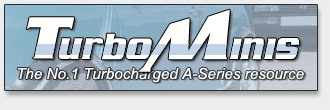| Page: |
| Home > Technical Chat > Srtaight Cut drops V Standard Helical ? | |||||||
 6744 Posts Member #: 828 Post Whore uranus |
9th Oct, 2008 at 03:08:10pm
thats a good idea rod , how about the hard against hard with a force fed oil supply and another lubrication groove in the face of either the washer or the gear ? Medusa + injection = too much torque for the dyno ..https://youtu.be/qg5o0_tJxYM |
||||||
|
Forum Mod 10979 Posts Member #: 17 ***16*** SouthPark, Colorado |
9th Oct, 2008 at 03:22:06pm
I am not convinced that the thrust washer spins against the alloy case in all circumstances.
Edited by TurboDave16V on 9th Oct, 2008. On 17th Nov, 2014 Tom Fenton said:
Sorry to say My Herpes are no better Ready to feel Ancient ??? This is 26 years old as of 2022 https://youtu.be/YQQokcoOzeY |
||||||
|
Forum Mod 10979 Posts Member #: 17 ***16*** SouthPark, Colorado |
9th Oct, 2008 at 03:25:47pm
BTW - what is the diameter of the idler pin on an A+??
On 17th Nov, 2014 Tom Fenton said:
Sorry to say My Herpes are no better Ready to feel Ancient ??? This is 26 years old as of 2022 https://youtu.be/YQQokcoOzeY |
||||||
 (2)[/url] by [url=https://www.flickr.com/photos/150672766@N03/]Rod Sugden[/url], on Fli) 5988 Posts Member #: 2024 Formally Retired Rural Suffolk |
9th Oct, 2008 at 03:51:34pm
The A+ I've always known as 7/8" and earliers as 3/4" - whether they were a metric size close to that, who knows, I've always found it strange how some parts are actually metric although known as imperial.....
Schrödinger's cat - so which one am I ??? |
||||||
 85 Posts Member #: 2234 Advanced Member Palm Beach Gardens, Florida |
9th Oct, 2008 at 04:49:23pm
TurboDave said "To expand on a way of preventing 'overfeeding' oil, the simplest way is to basically fill a chamber adjacent to the bearing, and then allow the oil to flow out of the top of the chamber. Result is zero pressure, and sufficient head to keep lubrication in there."
Edited by scooperman on 9th Oct, 2008. |
||||||
|
8604 Posts Member #: 573 Formerly Axel Podland |
9th Oct, 2008 at 05:19:18pm
Would something like this be any good?
Saul Bellow - "A great deal of intelligence can be invested in ignorance when the need for illusion is deep."
|
||||||
|
Forum Mod 10979 Posts Member #: 17 ***16*** SouthPark, Colorado |
9th Oct, 2008 at 05:55:22pm
Paul, that seems like an idea worth trying for sure. Not sure if the blue piece is meant to be pressed or welded?
On 17th Nov, 2014 Tom Fenton said:
Sorry to say My Herpes are no better Ready to feel Ancient ??? This is 26 years old as of 2022 https://youtu.be/YQQokcoOzeY |
||||||
|
8604 Posts Member #: 573 Formerly Axel Podland |
9th Oct, 2008 at 06:00:28pm
The blue plate would be secured by some countersunk screws.
Saul Bellow - "A great deal of intelligence can be invested in ignorance when the need for illusion is deep."
|
||||||
|
8604 Posts Member #: 573 Formerly Axel Podland |
9th Oct, 2008 at 06:19:13pm
I like the idea of using the first motion shaft bearing.
Saul Bellow - "A great deal of intelligence can be invested in ignorance when the need for illusion is deep."
|
||||||
|
Forum Mod 10979 Posts Member #: 17 ***16*** SouthPark, Colorado |
9th Oct, 2008 at 06:24:31pm
Well, it takes thrust, but not much tipping as the shaft is supported on the nose bearing... It might not be so suitable in reality... If you could compare the general diameter of the balls to a catalogue bearing (i assume you are getting them from the SKF interactive catalogue) you'll find somet close. On 17th Nov, 2014 Tom Fenton said:
Sorry to say My Herpes are no better Ready to feel Ancient ??? This is 26 years old as of 2022 https://youtu.be/YQQokcoOzeY |
||||||
 11046 Posts Member #: 965 Post Whore Preston On The Brook |
9th Oct, 2008 at 06:28:42pm
A+ idler shaft is 25mm On 26th Oct, 2004 TurboDave16v said:
Is it A-Series only? I think it should be... So when some joey comes on here about how his 16v turbo vauxhall is great compared to ours, he can be given the 'bird'... On 26th Oct, 2004 Tom Fenton said:
Yep I agree with TD........ |
||||||
|
8604 Posts Member #: 573 Formerly Axel Podland |
9th Oct, 2008 at 06:32:28pm
On 9th Oct, 2008 Sprocket said:
A+ idler shaft is 25mm The one sitting on my desk at the moment is approx. 22mm or 7/8". Saul Bellow - "A great deal of intelligence can be invested in ignorance when the need for illusion is deep."
|
||||||
 (2)[/url] by [url=https://www.flickr.com/photos/150672766@N03/]Rod Sugden[/url], on Fli) 5988 Posts Member #: 2024 Formally Retired Rural Suffolk |
9th Oct, 2008 at 06:36:23pm
Maybe I'm out of order, but I think the optimum solution (compromise, whatever) should be based on as little intrusive work as possible.
Schrödinger's cat - so which one am I ??? |
||||||
|
Forum Mod 10979 Posts Member #: 17 ***16*** SouthPark, Colorado |
9th Oct, 2008 at 06:41:09pm
Trouble you'll have is finding a thrust washer happy at a worse case maximum sliding speed up around 18m/sec, or a best case best sliding speed of circa 12.5m/s (assuming 6000rpm idler and a 40mm OD thrust washer)...
Edited by TurboDave16V on 9th Oct, 2008. On 17th Nov, 2014 Tom Fenton said:
Sorry to say My Herpes are no better Ready to feel Ancient ??? This is 26 years old as of 2022 https://youtu.be/YQQokcoOzeY |
||||||
 (2)[/url] by [url=https://www.flickr.com/photos/150672766@N03/]Rod Sugden[/url], on Fli) 5988 Posts Member #: 2024 Formally Retired Rural Suffolk |
9th Oct, 2008 at 06:42:51pm
On 9th Oct, 2008 Paul S said:
The one sitting on my desk at the moment is approx. 22mm or 7/8". That's what I thought too, but what's the OD ??? Mine are all in engines at the moment but I think I might want to do some load/area calcs too... Schrödinger's cat - so which one am I ??? |
||||||
|
8604 Posts Member #: 573 Formerly Axel Podland |
9th Oct, 2008 at 06:54:23pm
On 9th Oct, 2008 Rod S said:
On 9th Oct, 2008 Paul S said:
The one sitting on my desk at the moment is approx. 22mm or 7/8". That's what I thought too, but what's the OD ??? This afternoon, I took a rough measurement of the OD of the idler bearing at 35mm. Edited by Paul S on 9th Oct, 2008. Saul Bellow - "A great deal of intelligence can be invested in ignorance when the need for illusion is deep."
|
||||||
 (2)[/url] by [url=https://www.flickr.com/photos/150672766@N03/]Rod Sugden[/url], on Fli) 5988 Posts Member #: 2024 Formally Retired Rural Suffolk |
9th Oct, 2008 at 07:05:33pm
On 9th Oct, 2008 TurboDave said:
Trouble you'll have is finding a thrust washer happy at a worse case maximum sliding speed up around 18m/sec, or a best case best sliding speed of circa 12.5m/s (assuming 6000rpm idler and a 40mm OD thrust washer)... Clearely it can be done - something like - as the laygear thrust washers seem to last well and that is overdriven from the engine speed.... BTW The 'tipping' isn't what generates the wear - it is the 'cause' of the issue, but the "end effect" of this tipping is the axial thrust (becuase the idler is rigid, supported in bearings that allow an axial float, all held inside a (somewhat) rigid housing). That is the problem ultimately. OK, understanding more, but...... "Clearely it can be done - something like - as the laygear thrust washers seem to last well and that is overdriven from the engine speed...." So what about a bronze thrust washer set, PINNED to the alloy bits, so best copy of the layshaft thrust bearing. The layshaft thrust bearing is surely smaller than the idler gear (again, I don't have one in front of me...) but, as you say, the speed difference is well in our favour anyway. EDIT - What do we know about the design of the layshaft thrust "washers" ??? they look like bronze but have lots of dimples in their surface. Edited by Rod S on 9th Oct, 2008. Schrödinger's cat - so which one am I ??? |
||||||
|
8604 Posts Member #: 573 Formerly Axel Podland |
9th Oct, 2008 at 07:11:09pm
Anyone have a first motion shaft bearing to hand. I have a habit of throwing old bearings away.
Saul Bellow - "A great deal of intelligence can be invested in ignorance when the need for illusion is deep."
|
||||||
 (2)[/url] by [url=https://www.flickr.com/photos/150672766@N03/]Rod Sugden[/url], on Fli) 5988 Posts Member #: 2024 Formally Retired Rural Suffolk |
9th Oct, 2008 at 07:30:57pm
Yes,
Schrödinger's cat - so which one am I ??? |
||||||
|
8604 Posts Member #: 573 Formerly Axel Podland |
9th Oct, 2008 at 07:41:35pm
Thanks Rod.
Edited by Paul S on 9th Oct, 2008. Saul Bellow - "A great deal of intelligence can be invested in ignorance when the need for illusion is deep."
|
||||||
 1346 Posts Member #: 2340 Post Whore Dublin Ireland |
9th Oct, 2008 at 08:01:06pm
I have a very nice piece of bushing bronze here in the same diameter as the trusth washers from the idle gear, I am thinking of writing a bit of G code and making a bronze version of the idler thrust washer but this time put a driving peg on it which would lock up agenst the gearbox at some point making the only moving part the idler gear.
On 17th Feb, 2009 Rob H said:
I find the easiest way is to super glue the bolt to the end of one of my fingers. ______________________________________________________ |
||||||
|
Forum Mod 10979 Posts Member #: 17 ***16*** SouthPark, Colorado |
9th Oct, 2008 at 08:07:22pm
You can guestimate the speed and torque capacity of the laygear thrust washer easilly.
Edited by TurboDave16V on 9th Oct, 2008. On 17th Nov, 2014 Tom Fenton said:
Sorry to say My Herpes are no better Ready to feel Ancient ??? This is 26 years old as of 2022 https://youtu.be/YQQokcoOzeY |
||||||
|
Forum Mod 10979 Posts Member #: 17 ***16*** SouthPark, Colorado |
9th Oct, 2008 at 08:11:29pm
PaulH - So long as oil can get in, and OUT, your idea 'might' work. Again though - check the max reccomended surface speed for your material. On 17th Nov, 2014 Tom Fenton said:
Sorry to say My Herpes are no better Ready to feel Ancient ??? This is 26 years old as of 2022 https://youtu.be/YQQokcoOzeY |
||||||
 (2)[/url] by [url=https://www.flickr.com/photos/150672766@N03/]Rod Sugden[/url], on Fli) 5988 Posts Member #: 2024 Formally Retired Rural Suffolk |
9th Oct, 2008 at 08:18:55pm
On 9th Oct, 2008 TurboDave said:
Simple - but I don't have bits in my hand so can't do it! Well I wish you had the bits in YOUR hand and I hadn't done my degree so long ago :) Hopefully, between us all, we may get somewhere... Starting to get late over this side of the pond though.... Schrödinger's cat - so which one am I ??? |
||||||
 1346 Posts Member #: 2340 Post Whore Dublin Ireland |
9th Oct, 2008 at 08:31:49pm
Fore some reason BS online wont let me in saying my password is increct can anyone tell me the spec of this bronze it is BS1400: 1985: PBI Concast On 17th Feb, 2009 Rob H said:
I find the easiest way is to super glue the bolt to the end of one of my fingers. ______________________________________________________ |
||||||
| Home > Technical Chat > Srtaight Cut drops V Standard Helical ? | |||||||
|
|||||||
| Page: |



